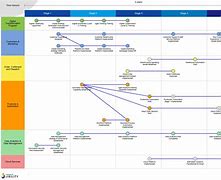
Daftar isi: [Hide]
- 1Digital Transformation with Virtual Data Rooms: Where to Start?
- 1.1What is Digital Transformation?
- 1.2The function of Technology in Modern Businesses
- 1.3Why Digital Transformation is Essential
- 1.4benefits of Digital Transformation:
- 1.5The Impact of Digital Transformation on Industries
- 1.6Virtual Data Rooms: A Key Tool for Digital Transformation
- 1.7What is a Virtual Data Room (VDR)?
- 1.8The Purpose of a VDR
- 1.9How VDRs Streamline Processes
- 1.10The benefits of Using a VDR
- 1.11Why Virtual Data Rooms are Crucial for Digital Transformation
- 1.12Where to Start with Digital Transformation with Virtual Data Rooms
- 1.13Examples of How Virtual Data Rooms Drive Digital Transformation
- 1.14Conclusion: Embrace the Power of VDRs for a achievementful Digital Transformation
- 1.15Reiterating the benefits of VDRs
- 1.16Encouraging readers to explore VDRs further
- 1.17The Future of Digital Transformation with VDRs

The digital world is changing rapidly, and businesses need to keep up to stay ahead of the competition. This means embracing new technologies and finding innovative ways to improve efficiency, productivity, and collaboration. One of the most powerful tools for businesses to achieve digital transformation is the Virtual Data Room (VDR). VDRs provide a secure, centralized platform for storing, sharing, and managing sensitive information, allowing businesses to streamline operations and make informed decisions with ease. But, with so many options available, it can be tough to know where to start.
This guide will provide a comprehensive overview of digital transformation with VDRs, offering actionable insights and tips on how to effectively implement and maximize its benefits. We’ll cover everything from choosing the right VDR provider to integrating the solution into your existing workflows. By understanding the fundamentals of VDR technology and exploring best practices, you’ll be well-equipped to embark on a successful digital transformation journey.
Don’t let digital transformation overwhelm you. By taking a strategic and systematic approach with the help of a VDR, you can navigate the complex world of digital change with confidence, unleashing your business’s true potential. Get ready to unlock the power of digital transformation with VDRs, one step at a time!
Digital Transformation with Virtual Data Rooms: Where to Start?
The business landscape is evolving rapidly, driven by technological advancements and changing customer expectations. Companies are embracing digital transformation to stay rival and thrive in this dynamic environment. Virtual data rooms (VDRs) are emerging as a key tool for organizations navigating this transformation journey, offering a secure and efficient platform for managing sensitive information and streamlining operations.
What is Digital Transformation?
Digital transformation encompasses the integration of digital technology into all areas of a business. It involves adopting new technologies, processes, and ways of thinking to fundamentally change how an organization operates, interacts with customers, and creates value.
The function of Technology in Modern Businesses
Technology is no longer just a tool; it’s the backbone of modern businesses. From cloud computing and artificial intelligence to data analytics and automation, technology empowers companies to maximize processes, enhance productivity, and gain a rival edge.
Why Digital Transformation is Essential
Digital transformation is not a choice but a requirement for survival in today’s industry. Here are some compelling reasons why:
- boostd Customer Expectations: Customers are increasingly demanding seamless digital experiences, personalized interactions, and instant access to information.
- Globalization and Competition: Companies face intense competition from global players, demanding agile and responsive operations.
- Rapid Technological Advancements: New technologies emerge constantly, creating opportunities for innovation and disruption.
- Data-Driven Decision Making: Businesses are relying more heavily on data to make informed decisions and drive better outcomes.
benefits of Digital Transformation:
Digital transformation offers a scope of benefits, including:
- boostd Efficiency: Automating processes and leveraging technology can significantly improve efficiency and reduce operational costs.
- Enhanced Collaboration: Digital tools facilitate communication and collaboration, enabling teams to work together seamlessly.
- Improved Decision Making: Access to real-time data and analytics empowers better decision-making, leading to improved outcomes.
The Impact of Digital Transformation on Industries
Digital transformation is reshaping industries across the globe. From finance and healthcare to manufacturing and retail, companies are leveraging technology to:
- maximize provide Chains: Using data and analytics to streamline inventory management, logistics, and distribution.
- Personalize Customer Experiences: Leveraging data to personalize offers, offer tailored recommendations, and improve customer service.
- Develop Innovative Products and Services: Creating new products and services based on customer insights and emerging technologies.
Virtual Data Rooms: A Key Tool for Digital Transformation
Virtual data rooms (VDRs) are cloud-based platforms that offer a secure and controlled environment for managing sensitive information and collaborating on projects. VDRs are becoming increasingly integral to digital transformation initiatives, enabling organizations to:
- Streamline Processes: Centralize information, automate workflows, and improve efficiency.
- Enhance Collaboration: Facilitate secure collaboration among internal teams and external stakeholders.
- Improve Security and Compliance: Protect sensitive data from unauthorized access and comply with industry regulations.
What is a Virtual Data Room (VDR)?
A VDR is a secure, online platform designed to share and manage confidential documents and information. Think of it as a digital vault where you can store, access, and collaborate on sensitive data.
The Purpose of a VDR
VDRs serve a wide scope of purposes, including:
- Due Diligence: Sharing sensitive information during mergers and acquisitions.
- Real Estate Transactions: Managing documents and facilitating communication for property sales or leases.
- Intellectual Property Management: Protecting and managing intellectual property rights.
- Legal and Regulatory Compliance: Storing and managing sensitive documents for legal and regulatory compliance.
How VDRs Streamline Processes
VDRs streamline processes by:
- Centralizing Data: Providing a single location for all pertinent documents and information.
- Automating Workflows: Automating document sharing, approval processes, and other tasks.
- Improving Security: Implementing robust security measures to protect sensitive data.
- Facilitating Communication: Enabling secure communication and collaboration among stakeholders.
The benefits of Using a VDR
Here are some of the key benefits of using a VDR:
- Enhanced Security: VDRs offer advanced security attributes, including encryption, access controls, and audit trails, to protect sensitive data.
- Improved Efficiency: VDRs automate processes, reducing manual effort and saving time.
- boostd Collaboration: VDRs facilitate seamless collaboration among internal teams and external stakeholders.
- Simplified Compliance: VDRs comply with industry regulations and help organizations meet compliance requirements.
- Cost Savings: VDRs can reduce costs associated with physical data storage, document management, and travel.
Why Virtual Data Rooms are Crucial for Digital Transformation
VDRs are a crucial component of digital transformation for several reasons:
- Security and Compliance: Ensuring data protection is paramount for any digital transformation initiative, and VDRs offer the necessary security attributes to safeguard sensitive information.
- Collaboration and Communication: Digital transformation requires effective communication and collaboration among teams and stakeholders, and VDRs facilitate seamless teamwork.
- Workflow Optimization: Digital transformation often involves streamlining and automating processes, and VDRs simplify complex workflows.
- Accessibility and Remote Access: Digital transformation extends beyond the office, and VDRs enable global collaboration by providing secure access from anywhere.
Where to Start with Digital Transformation with Virtual Data Rooms
Here is a step-by-step guide to implementing VDRs as part of your digital transformation journey:
Step 1: determine Your objectives and Needs
- Define your objectives: What do you hope to achieve with digital transformation?
- determine your needs: What are your specific information management and collaboration challenges?
- Assess your current processes: Analyze your existing workflows and determine areas for improvement.
Step 2: select the Right VDR Platform
- study VDR offerrs: Explore varied VDR platforms and their attributes.
- Compare pricing and attributes: Consider your budget and the attributes you need.
- Look for industry-specific VDRs: Some VDRs cater to specific industries, such as healthcare or finance.
Step 3: Implement the VDR into Your Workflow
- Onboard users: offer training and support to your team.
- Integrate the VDR: Connect the VDR with your existing systems and workflows.
- Test the VDR: Ensure the VDR is functioning as expected and meets your needs.
Step 4: Train your Team on Using the VDR
- offer thorough training: Train your team on all facets of using the VDR.
- Offer ongoing support: offer ongoing assistance and answer querys.
- Encourage user feedback: Solicit feedback to determine areas for improvement.
Step 5: Monitor and maximize the VDR
- Track application and performance: Monitor how the VDR is being used and its impact on your workflows.
- determine areas for improvement: Look for ways to maximize the VDR and enhance its functionality.
- Make adjustments as needed: Continuously adapt the VDR to meet your evolving needs.
Examples of How Virtual Data Rooms Drive Digital Transformation
VDRs play a vital function in driving digital transformation across a scope of industries and applications:
- Due Diligence in Mergers and Acquisitions: VDRs allow companies to securely share confidential information with potential investors and buyers during merger and acquisition processes.
- Real Estate Transactions: VDRs facilitate efficient communication and document management for real estate transactions, reducing delays and streamlining the process.
- Intellectual Property Management: VDRs offer a secure platform to manage and protect intellectual property rights, ensuring confidentiality and compliance.
- Legal and Regulatory Compliance: VDRs help organizations manage and store sensitive documents for legal and regulatory compliance, reducing the risk of data breaches and penalties.
Conclusion: Embrace the Power of VDRs for a achievementful Digital Transformation
By embracing VDRs as a key component of your digital transformation plan, you can:
- Enhance Security: Protect sensitive information from unauthorized access.
- Improve Efficiency: Streamline processes and reduce manual effort.
- Boost Collaboration: Facilitate seamless communication and teamwork.
- Drive Innovation: Enable faster and more informed decision making.
VDRs are not just a tool for managing documents; they are a powerful engine for driving digital transformation, empowering organizations to streamline operations, enhance collaboration, and achieve their strategic objectives.
Reiterating the benefits of VDRs
Remember, VDRs offer a multitude of benefits, including:
- Centralized document management: Organize and access all your critical files in one secure location.
- Enhanced data security: Protect sensitive information with robust encryption and access controls.
- Streamlined collaboration: Facilitate seamless communication and collaboration among internal teams and external stakeholders.
- Improved efficiency: Automate workflows and processes, saving time and resources.
- Simplified compliance: Ensure compliance with industry regulations and legal requirements.
Encouraging readers to explore VDRs further
Don’t hesitate to explore VDRs further. They offer a powerful solution for businesses of all sizes looking to embrace digital transformation.
The Future of Digital Transformation with VDRs
The future of digital transformation with VDRs is bright. As technology continues to evolve, VDRs will become even more integrated with other digital tools and platforms, offering greater functionality and enhanced capabilities. The use of artificial intelligence (AI) and machine learning (ML) will also play a key function in further optimizing VDRs, enabling smarter workflows, automated data examination, and more intelligent insights.
Embracing VDRs as part of your digital transformation journey is not just a technology adoption; it’s a strategic decision that can unlock new opportunities, enhance efficiency, and drive growth for your business.








